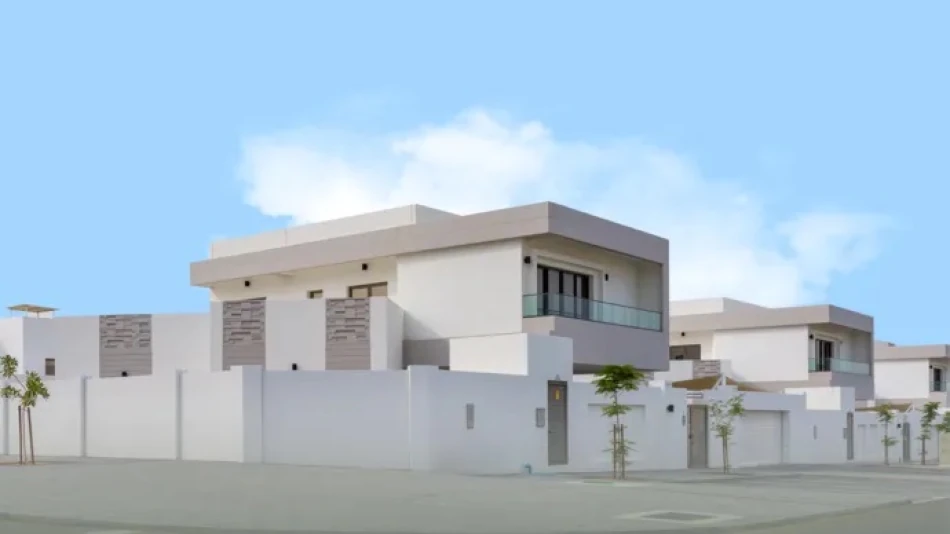
Abu Dhabi Housing Authority Expands Partnerships with 3 Local Banks to Offer More Citizen Housing Financing
Abu Dhabi Expands Housing Finance Options with Government-Subsidized Banking Partnerships
Abu Dhabi's Housing Authority has inked deals with three major national banks to offer additional property financing with government-subsidized interest rates, marking a significant expansion of the emirate's homeownership strategy. The initiative targets middle-to-upper income Emiratis earning over AED 30,000 monthly, offering up to AED 500,000 in supplementary funding with 25-year repayment terms and 50% government interest subsidies.
Strategic Banking Partnerships Drive Housing Accessibility
The Abu Dhabi Housing Authority signed cooperation agreements with First Abu Dhabi Bank, Abu Dhabi Islamic Bank, and Al Mashriq Bank to provide enhanced financing solutions for citizens already enrolled in the authority's housing loan program. This move represents a coordinated effort between government housing policy and private banking infrastructure to address growing homeownership demands.
The financing structure adheres to both UAE Central Bank regulations and Islamic Sharia compliance requirements, ensuring broad accessibility across the emirate's banking landscape while maintaining regulatory oversight.
Eligibility and Financial Structure
Citizens qualifying for the additional financing must already hold housing purchase or construction loans from the Abu Dhabi Housing Authority, with monthly incomes exceeding AED 30,000. The supplementary funding reaches up to AED 500,000 per applicant, extending repayment periods to 25 years with the Abu Dhabi government covering half of all interest and profit-sharing costs.
Notably, the program includes borrowers who have activated their initial AED 1.75 million loans but have not yet begun disbursing payments to developers and contractors, providing greater flexibility in construction planning and cash flow management.
Regional Context and Market Implications
This initiative positions Abu Dhabi alongside other Gulf states implementing aggressive homeownership policies. Saudi Arabia's Vision 2030 targets 70% homeownership rates, while Qatar has expanded mortgage lending through state-backed programs. Abu Dhabi's approach differs by directly subsidizing private bank lending rather than solely relying on government-issued loans.
Banking Sector Impact
For participating banks, the government subsidy reduces default risk while maintaining profit margins on extended loan portfolios. The 25-year repayment structure aligns with international mortgage standards, potentially attracting expatriate residents seeking long-term financing solutions in future program expansions.
The partnership model also strengthens ties between Abu Dhabi's sovereign wealth ecosystem and domestic banking infrastructure, creating precedents for similar public-private financing arrangements across other sectors.
Digital Integration and Accessibility
Applications for supplementary financing are processed through the "Abu Dhabi Housing" mobile application, reflecting the emirate's broader digital government initiatives. This streamlined approach reduces bureaucratic barriers while maintaining oversight through centralized processing systems.
According to Housing Authority Director General Hamad Hareb Al Muhairi, the agreements extend the authority's strategic partnerships with national banking sector players, emphasizing flexible and accessible financing solutions that meet evolving citizen needs within a sustainable housing ecosystem.
Long-term Housing Strategy
The expanded financing options support Abu Dhabi's broader urban development goals, including population growth accommodation and economic diversification efforts. By increasing homeownership accessibility, the emirate aims to enhance social stability and family welfare while reducing long-term government housing expenditure through private sector engagement.
This model could serve as a template for other Emirates seeking to balance government housing support with private sector efficiency, particularly as regional real estate markets adapt to post-pandemic economic conditions and changing demographic patterns.
 Sara Khaled
Sara Khaled







